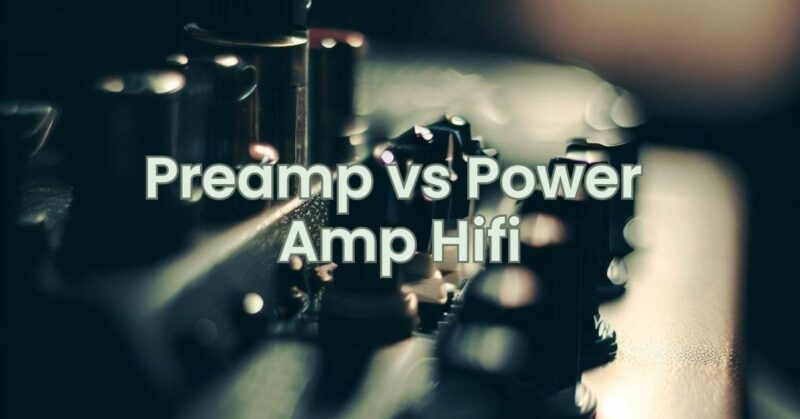When building a high-fidelity (hi-fi) audio system, understanding the roles and distinctions between a preamplifier (preamp) and a power amplifier (power amp) is essential. Both components play crucial roles in the audio signal chain, and knowing how they function can help you make informed decisions when designing your system. In this article, we will delve into the differences between preamps and power amps, exploring their functions, benefits, and the impact they have on your audio experience.
Preamplifier (Preamp):
The preamplifier is the initial stage in the audio signal chain, situated between the audio sources (such as a turntable, CD player, or media streamer) and the power amplifier. Its primary function is to handle incoming audio signals and prepare them for amplification. Here are key aspects of preamps to consider:
Signal Processing and Control:
The preamp adjusts and fine-tunes the incoming audio signal, providing control over volume, tone, and source selection. It may feature equalization (EQ) controls, tone adjustments, and input switching capabilities, allowing you to customize the audio output according to your preferences.
Signal Amplification:
While the preamp does amplify the audio signal to some extent, its primary purpose is to provide control and signal conditioning rather than driving speakers directly. The amplified signal from the preamp is then sent to the power amplifier for further amplification.
Input Sensitivity and Impedance Matching:
Preamps offer input sensitivity adjustments to accommodate different audio sources with varying signal strengths. They also provide impedance matching between the audio source and the power amplifier, ensuring optimal signal transfer and minimizing impedance mismatch issues.
Power Amplifier (Power Amp):
The power amplifier, also known as the amplifier or amp, is responsible for amplifying the audio signal received from the preamp to a level suitable for driving speakers. Here are important aspects to consider regarding power amps:
Signal Amplification and Power Output:
Power amplifiers receive the preamplified audio signal and amplify it significantly to provide sufficient power to drive speakers. The power amp’s primary function is to increase the signal’s amplitude without introducing distortion, allowing it to reach the desired listening level.
Speaker Control and Dynamics:
Power amps play a crucial role in controlling the speakers, ensuring accurate reproduction of the audio signal with minimal distortion. They provide the necessary voltage and current to drive speakers with control, precision, and the ability to faithfully reproduce dynamic passages and transients.
Amplifier Class and Efficiency:
Power amplifiers come in various classes, such as Class A, Class AB, and Class D, each with its own characteristics in terms of efficiency, power output, and sonic performance. Choosing the right amplifier class depends on your specific audio preferences, power requirements, and system setup.
Separate Preamp and Power Amp vs Integrated Amp:
In some audio systems, preamp and power amp functions may be combined into a single integrated amplifier (integrated amp). Integrated amps offer convenience, space-saving benefits, and cohesive design. However, they may have limitations in terms of upgradeability and customization compared to separate preamp and power amp configurations.
Conclusion:
In a hi-fi audio system, the preamplifier and power amplifier play distinct yet interconnected roles. The preamp handles signal processing, control, and impedance matching, while the power amp focuses on amplifying the audio signal to drive speakers effectively. Understanding the differences between preamps and power amps helps you make informed decisions when selecting components for your audio setup. Whether you opt for separate preamp and power amp units or choose an integrated amplifier, consider your audio preferences, system requirements, and room for future expansion to create a balanced and immersive listening experience.


